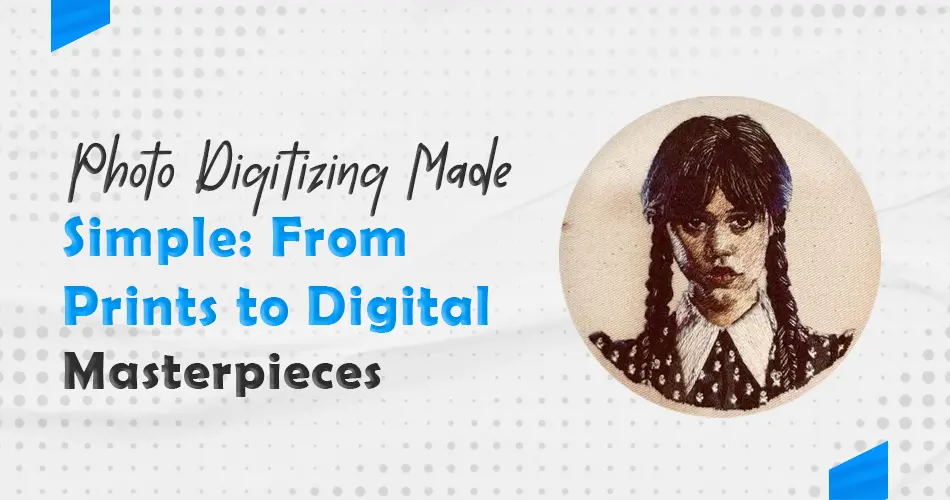Embarking on the journey of photo digitizing unlocks a multitude of benefits for photo enthusiasts and families alike. This process not only paves the way for convenient sharing and streamlined storage solutions but also offers an invaluable safety net against unexpected losses. Imagine the ease of sending a digital album to relatives across the globe or the peace of mind knowing your childhood memories are preserved in the cloud.
Additionally, the digital realm opens up endless possibilities for photo enhancement. Whether it’s reviving the colors of a faded picture or repairing the tears and scratches of time, photo digitizing gives them a second life. Beyond preservation and restoration, photo digitizing allows for creative expression, enabling you to integrate your photos into personalized gifts, custom decor, or compelling digital art projects. Embrace the digital transformation and give your cherished memories the platform they deserve.
Choosing the Right Equipment for Photo Digitizing
Selecting the best equipment is a crucial step in the photo digitizing process. As it directly impacts the quality of your digital images. When shopping for a scanner, consider opting for a flatbed model. Known for its versatility and ability to produce high-resolution scans. Look for scanners that offer a minimum resolution of 300 DPI (dots per inch) for standard photo sizes. But aim for higher DPIs if you plan to enlarge the images. Color depth is another critical factor; a scanner that offers 48-bit color depth will deliver more accurate and vibrant results compared to one with 24-bit color. Additionally, some advanced scanners feature built-in color correction and dust and scratch removal functionalities, enhancing the photo digitizing process.
For those who prefer a hands-off approach or have a large volume of photos, professional photo digitizing and embroidery digitizing services are a great alternative. These services use state-of-the-art equipment and techniques to ensure high-quality digitization, providing peace of mind and saving time. Whether you choose a DIY route with a personal scanner or opt for a professional service, the right equipment and choice will lay the foundation for transforming your printed photos into cherished digital masterpieces.
Preparing Your Photos for the Digitizing Process
Preparing your photos for photo digitizing is a pivotal step that cannot be overlooked. Begin by gently cleaning each photo to remove dust, lint, or any other debris that could compromise the scan quality. A soft, lint-free cloth is ideal for this purpose; gently wiping the surface of the photo will usually suffice. If you encounter stubborn spots, a specialized photo cleaning solution can be used sparingly. Remember, the goal is to clean without causing damage, so always handle your prints with the utmost care.
Next, sorting your photos is equally important. Organize them in a way that makes sense for you—whether that’s chronologically, by event, or by the people featured. This not only streamlines the scanning process but also aids immensely in the future organization and retrieval of your digital images. Use acid-free, archival-quality sleeves or folders to keep the photos sorted and protected until they are scanned. This pre-scanning organization and meticulous handling will pave the way for a smooth transition from physical to digital, ensuring your memories are preserved in the best possible quality.
Step-by-Step Guide to Scanning Your Photos
To initiate the photo digitizing process, carefully position your photo with the image side facing down on the clean, flat surface of the scanner bed. Ensure no dust or debris is on the scanner glass to prevent unwanted artifacts in your digital image. Before proceeding, adjust your scanner settings, prioritizing high resolution (ideally 300 DPI or higher for standard photo sizes) and accurate color reproduction to capture the full depth and vibrancy of the original print. It’s recommended to handle each photo individually through the scanning process, as this meticulous approach ensures the preservation of quality and detail without compromise.
Commence the scanning operation by selecting the appropriate button on your scanner or software interface. Patience is key; allow the scanner to thoroughly capture the image without rushing the process. After the scan is complete, review the digital image for accuracy and quality. Save the scanned image in a high-resolution format, such as TIFF for archival purposes or JPEG for more practical, everyday use. This careful, step-by-step process ensures that each digitized photo retains the essence and quality of its physical counterpart, ready for any future enhancements, sharing, or printing endeavors you may have in mind.
Enhancing and Editing Your Digital Photos
With your photos now digitized, the journey to perfecting them isn’t over yet. Dive into the world of photo editing software to bring out the true beauty of your images. Start by adjusting lighting elements such as exposure, brightness, and contrast to breathe life into each photo. Color correction plays a pivotal role in restoring the vibrancy that time may have faded. Adjust saturation and hue to recapture the original colors or even give your photos a new artistic twist.
Scratches, dust spots, and other blemishes are common on older photos, but digital editing tools offer powerful solutions. Utilize the healing or cloning tools to meticulously remove these imperfections, ensuring your digital images are as flawless as possible. For those looking to add a creative flair, explore filters and effects that can transform your photos into unique pieces of art.
The editing process is also an opportunity to crop your photos for better composition or to focus on specific details. This phase is about refining and enhancing, ensuring your digitized photos not only preserve but also elevate the essence of your cherished memories.
Storing and Organizing Your Digital Photos
Once your photos have transitioned into the digital realm, the next crucial step is their systematic organization and secure storage. Begin by creating a structured folder system on your computer or preferred storage device. This can be categorized by year, event type, or people featured in the photos. This approach ensures that finding a specific photo in the future becomes a hassle-free process. Utilize descriptive filenames for each image, incorporating key details such as the date, location, and subjects, which aids in quick identification and retrieval.
To protect your digital treasures against potential data loss, adopting a robust backup strategy is imperative. Employ external hard drives, USB flash drives, or cloud storage solutions for redundancy. Cloud storage, in particular, offers the added advantage of accessibility from any location with internet access, ensuring your memories are always within reach. Remember, the digital format of your photos not only facilitates easy sharing. But also demands responsibility in terms of maintenance and organization to preserve their accessibility and enjoyment for years to come.
Best Practices for Sharing and Printing Your Digital Photos
Navigating the digital landscape allows for seamless sharing of your digitized photos. Platforms like social media, cloud galleries, and email make it easier than ever to connect with loved ones by showcasing your cherished moments. When sharing, consider the platform’s image specifications to maintain the quality of your photos. For those moments that deserve more than a digital display, printing brings your memories back into the tangible world. Opt for a high-quality photo printer and choose premium photo paper that matches the finish you desire—be it glossy, matte, or luster.
Calibration of your printer ensures color accuracy, capturing the vibrancy and detail of your digitized photos as intended. For a lasting impact, creating photo books or personalized albums offers a creative and professional way to compile your memories. These can serve as perfect gifts or keepsakes, allowing you to browse through your photo digitizing moments with ease. When sharing or printing, remember to respect the privacy and wishes of everyone featured in your photos, ensuring a positive and respectful circulation of your digitized memories.
Conclusion
Embarking on the journey of transforming your cherished printed photos into digital formats is both rewarding and practical. Through the comprehensive steps outlined, from selecting the right equipment to organizing and editing your digital images. You are now equipped to safeguard your memories and breathe new life into them. High-quality photo digitizing ensures that these treasured moments are preserved with the utmost fidelity, ready to be shared and admired in a multitude of modern ways. Whether it’s through professional embroidery digitizing services or vector art services by using advanced scanning technology at home. The goal is clear: to immortalize your memories in the digital realm. By doing so, you not only secure them against the ravages of time but also unlock a world of creative potential. Making it easier than ever to keep your history alive and vibrant for future generations to appreciate.




